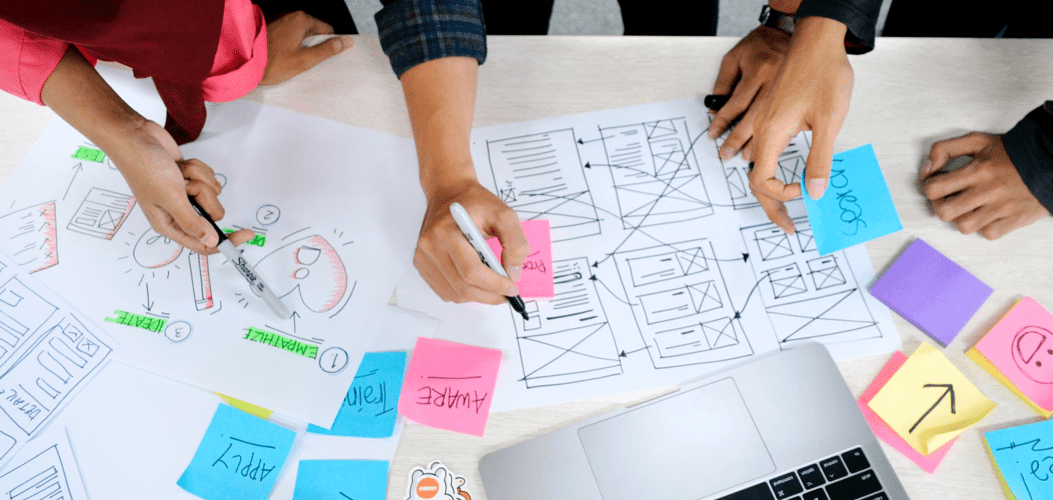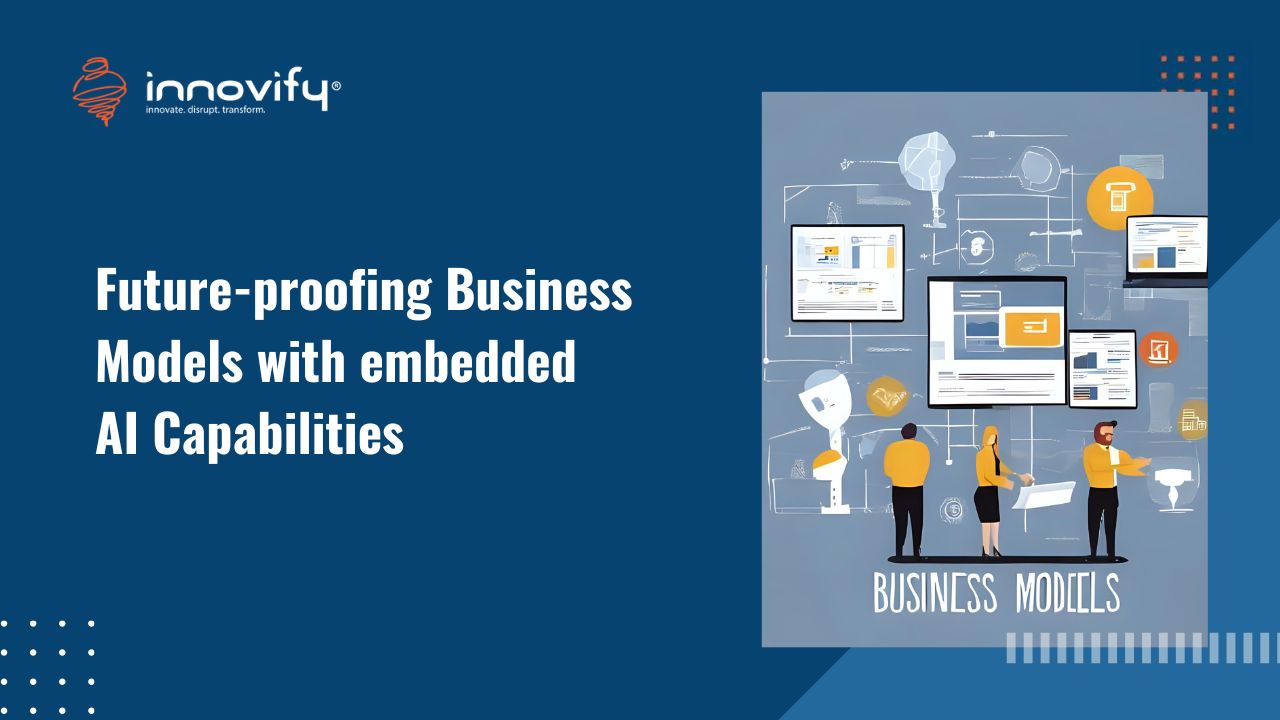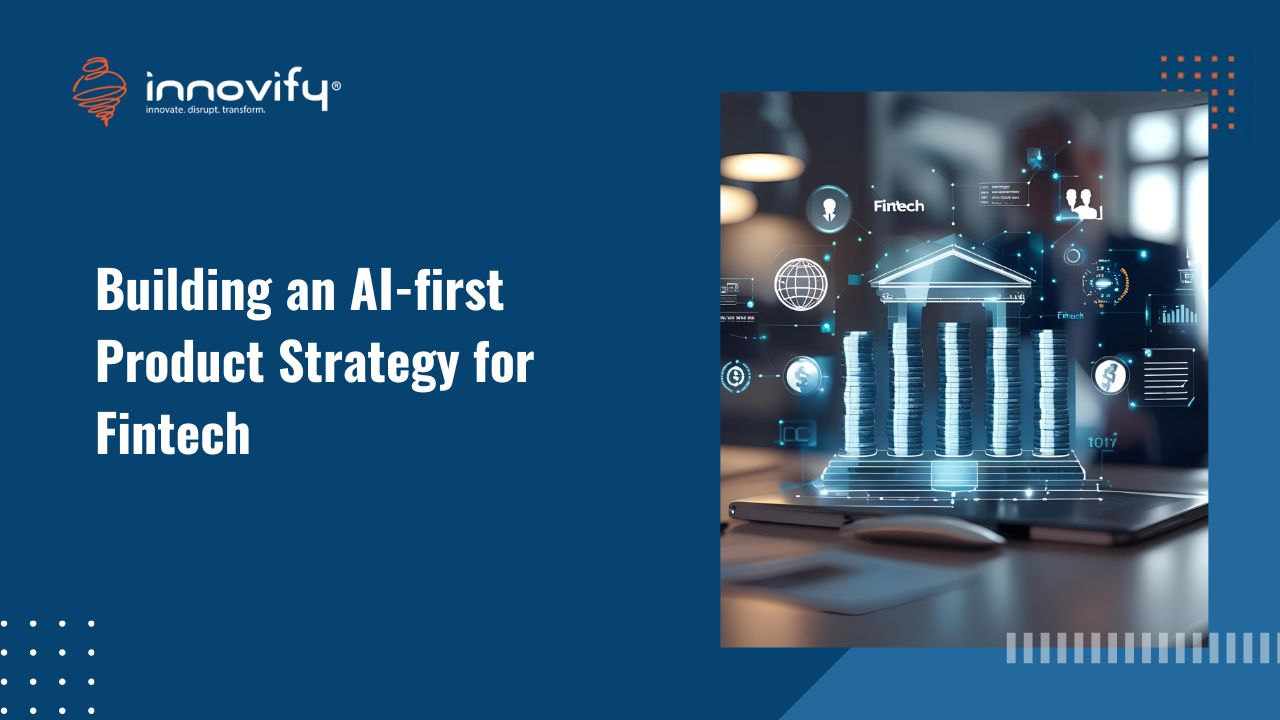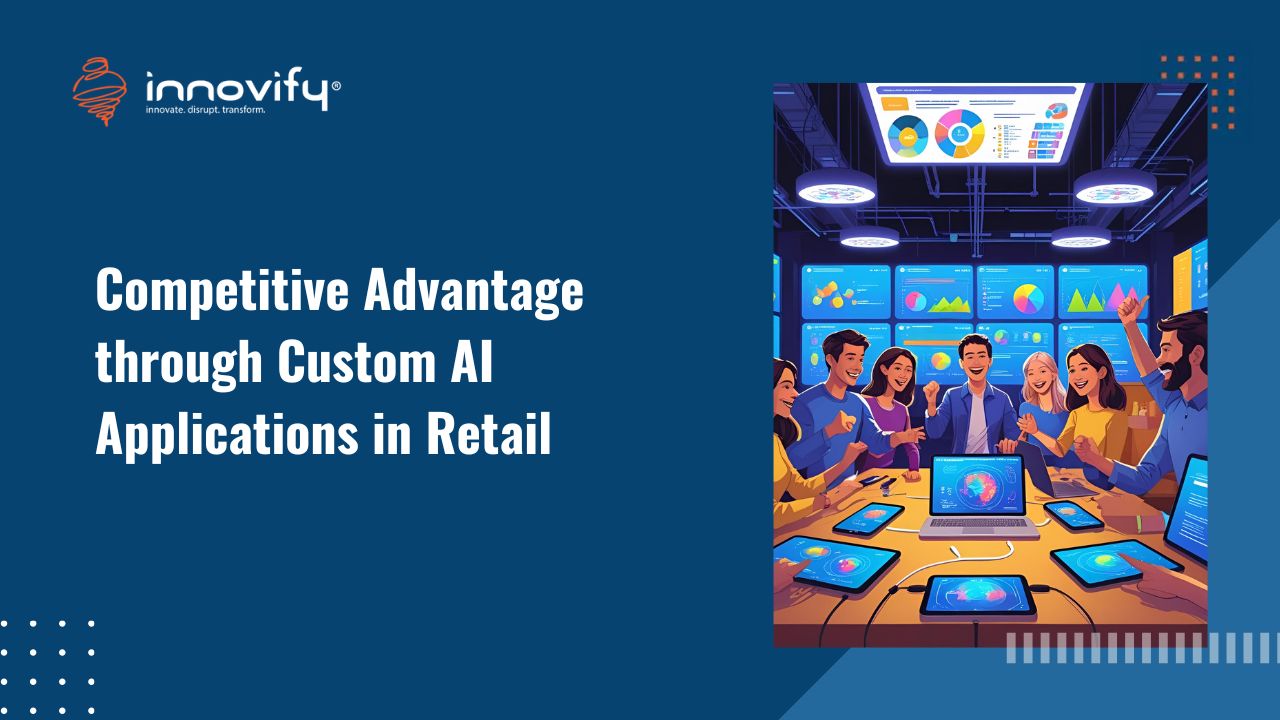AI/ML
UX Design for emerging technologies
We’re on the cusp of a tech revolution. Augmented reality (AR), virtual reality (VR), artificial intelligence (AI), the Internet of Things (IoT), 5G, the blockchain and smart cities are going to drastically change all of our lives. Using that technology in an intuitive and seamless way begins with the user experience (UX).
An exciting time for UX
So, it’s an exciting time for UX designers. But it’s completely unexplored territory and this puts UX designers in a slightly uncomfortable position. They cannot fully rely on existing standards and there isn’t a wealth of research to fall back on. User behaviour with emerging tech isn’t defined. In some cases, the audience isn’t even known yet. The tech is still in its infancy, so user needs and habits are still developing. Plus, some devices such as the IoT, are waiting on industry-wide standards. This leaves UX with very basic foundations to build upon.
But it’s going to have such a huge impact on user lives, that UX needs to work with what it’s got so far. How can it go about this? A potential answer was explored at a recent #ProductTalks by Akil Benjamin, Head of Research at Comuzi.

A chatbot to understand the AI experience
He shared insights from a recent chatbot project that the company did to better understand AI and how people interact with it. Akil emphasised that the design approach for emerging tech went beyond UX. Instead, he introduced HX – the human experience.
Because emerging tech like AI and the blockchain will have potentially life-changing impacts, UX designers must consider the entire human experience in design. Poor design could lead to mistaken user behaviour or misunderstanding. In some cases, this will have drastic consequences. A mortgage application could be refused, a judicial sentence mistakenly issued or an autonomous vehicle could fail.
Human experience, beyond UX
Designing for HX was explored by Akil with the chatbot, called MoodJar, and its teenage audience. He began by consulting with the group about their needs from a mental health chatbot. Uncovering some surprising and challenging findings.
Akil found that teenagers see chatbots as tools, not friends. So, designing a chatbot to ‘hide’ its inner workings and appear more ‘human’ was the wrong route for MoodJar. Instead, the team developed the tool to be upfront about being a chatbot and to not use an overly friendly tone.
The teens had a relatively superficial understanding of AI and how it worked. As one user stated, “I could explain Alexa superficially… that’s fine as I could always go and find out more if I wanted”. They were happy to have this level of understanding, except in cases where the AI influenced their finances, health, employment or security. Then, they wanted a deeper understanding of what the AI tool would do.
The need for privacy

For the purposes of MoodJar, keeping conversation non-biased and steering away from humanlike behaviour was enough for users. They also wanted it to be private and hidden on their smartphones so friends and family wouldn’t see it.
Sensitivity around certain topics, like mental health, is vital for UX designers to understand. Users won’t engage with a tool if they feel uncomfortable or exposed by it. The same applies to the use of data and how an AI interacts with them. Any UX designer working with AI and personal data must relay the privacy and security of such tools to set users’ minds at ease. Especially in today’s post-Facebook/Cambridge Analytica world, where consumers are generally less trusting about how companies collect and use their data. Because of this, MoodJar was designed to forget user data immediately after the app is deleted from a device.
Top 8 emerging technologies in UX design
UX technology can result in fresh developments in your own company. To effectively supply custom software solutions that precisely fit your customers’ needs, practically every firm must stay abreast of evolving technology. The Top 8 upcoming UI UX technologies you should be aware of are listed below, along with a concise summary of how they may affect application development.
1. Automation
Automation is a technique for managing or using a system, equipment, or process without ongoing human involvement.
What it entails for creating applications: Writing, speaking, and driving are just a few examples of tasks that automation can duplicate that were formerly human-only. Standardised graphic design work, agriculture, journalism, and marketing are a few common applications. Applications of emerging technology in business and design management are being automated. Additionally, it can be used with 3D printing to provide manufacturers with speciality parts on demand or with machine learning to accelerate the improvement of almost anything.
2. Robotization
By using a machine that can automatically carry out complicated and/or repetitive activities or one that is managed by software, tasks can be automated through robotisation.
What it means for application development: Applications involving robotics have a significant influence across a range of industries. Farmers and developers have collaborated in the agricultural sector to program weed-eating robots that save crops from toxic chemicals. They can also be used to harvest crops and apply fertiliser. Advanced robotic programming can replicate the actions of a cook or barista. Therefore, they are also being employed in the food service sector to significantly save overhead and enable food service enterprises to operate around the clock.
3. Cryptocurrencies
Cryptocurrency is a form of digital money that operates independently of a central bank and relies on encryption to regulate the generation of currency units and authenticate transaction activity. The world’s first decentralised ledger currency, Bitcoin, is a prime example.
What it entails for the creation of applications: Today’s consumers are becoming more and more interested in cryptocurrencies, and there is an increasing need for businesses to have the technology to take them as a method of payment.
Applications that smoothly convert cryptocurrencies into cash are currently under development. Many people are sceptical about this sector, but with significant changes in how people view the virtual world, cryptocurrencies may open up new channels for clients to buy products and services from your company.
4. 3-D Printing
The method of creating three-dimensional solid items from a digital file created in a CAD model is known as additive manufacturing or 3D printing.
What it means for the development of apps: Although 3-D printing has been around for a while, its applications are still in their infancy. Retail companies are beginning to investigate the potential of employing 3-D printers to create customised clothing for customers. A firm is working on an app that uses 3-D printing technology to create the ideal shoe after scanning a customer’s foot. User-friendly interfaces and applications will give many organisations a cutting-edge competitive advantage to fully utilise this UI UX technology.
5. IoT (Internet of Things)
The Internet of Things, or IoT, is transforming how businesses acquire information and make daily business decisions. Businesses can stream incoming data from sensor-equipped wearables, linked buildings, cars, and other objects to optimise processes, increase productivity, and produce better results.
What it means for application development: Software applications can be used to automate particular operations, increase the effectiveness of processes, and discover new insights after the data has been analysed. This is done by using the data gathered through IoT. IoT devices that record, analyse, and interpret data have recently been developed by businesses to personalise functions to complement your daily tasks, manage health issues, improve the purchasing process, and provide better customer service. Examples include fitness trackers, sleep monitors, Amazon Dash Buttons for quick product restocking, and smart lights that know exactly when to switch on and off based on your behaviours and mood.
6. Voice Recognition
Voice recognition also referred to as “speech recognition,” is the capability of a machine or program to receive and understand dictation or to comprehend and execute spoken commands. What that means for application development is that the market for speech recognition technology’s usefulness in all kinds of software is continuing to expand as companies like Google, Apple, Amazon, and Microsoft adopt the technology. As more people become accustomed to these UI UX technologies, integrating speech recognition capabilities into your internal and external apps can improve user experience and open doors to new industries.
7. Autonomous Vehicles
Robotic cars, known as autonomous vehicles, are built to navigate between locations without a human driver. Fully autonomous vehicles can navigate on their own over unprepared roads to a predefined location without the assistance of a human.
What that means for application development is that a whole new market for software applications is opening up as businesses like Tesla, Google, and Uber break the surface of autonomous vehicle development. There is a market for new en-route productivity apps to be developed to complement the driverless experience and new forms of entertainment, and media companies have started competing for advertising during autonomous car travels. Time spent commuting becomes productive thanks to autonomous vehicles. As we remove the inherent constraints of human drivers and add a new set of technology-based variables, the consequences for the logistics and emerging technology in business and design.
8. Drones
In terms of UX technology, drones are unmanned. The plane can be remotely piloted or fly on its own using software-controlled flight plans in embedded systems in coordination with GPS and onboard sensors. Recently, businesses like Amazon declared their intentions to utilize them for same-day delivery operations.
What it means for application development: Drone use impacts key industries and aids software development teams in achieving their objectives. Businesses can develop software that gathers, tracks, analyses, and manages drone-generated data. Drones can be used in sectors like agriculture to track crop growth. For instance, they make it possible for programmers to access data collected by drones and incorporate it into real-time applications that farmers may use to control the production of their crops. Drones can be used to photograph and video sites, carry supplies and information to far-flung areas, and provide information about potentially harmful circumstances.
Building trust through UX
Building trust in emerging tech is critical to its adoption, so must be a priority for UX. Part of this is communicating limitations. The reality is that emerging tech is still under development and users should be aware of that. Especially with technology that requires a lot of trust.
Self-driving cars, for example, are evolving quickly but risk being undermined by a series of accidents and falling user trust. Uber came under fire for a fatal accident involving an autonomous vehicle that it was testing. Although the reasons behind the accident were later revealed (the victim was walking outside of a pedestrian crossing and wasn’t detected in time) the incident caused public trust in the tech to waver. One solution proposed by UX designers is to make the car’s decision-making clearer to passengers. Showing a screen that highlights a car’s understanding of its location, surroundings and proposed route is a step in the right direction. Passengers of autonomous vehicles must feel in control of the experience.
Future of UX Design
If you’re looking into chatbots, voice AI, machine learning VR/AR, gesture-based recognition, or another emerging technology that requires you to change. Technology advancements present both a chance and an issue. There are many unknowns, and the best practices, such as standards, patterns, and guidelines, remain to be developed.
The good thing about the future of UX design is that it will always play a vital role in creating appealing and enjoyable experiences, even if technology changes. This impacts your work; however, as a UX designer, you are able to use the skills you already have. Utilise user-centric design methods to conduct thorough studies of the user that add joy and personality to the user experience. Make sure you design your experience with inclusiveness with an eye towards inclusivity and apply harm reduction into the process from the beginning.
There are many new challenges in the future of UX design however, you’re in the perfect situation to get outside your comfort zone and play with the latest technology early to test the boundaries. You can experiment with your new technology, take the lessons learned from your mistakes and then share what you’ve learned with your peers. You can make a significant change in how we use technology.




